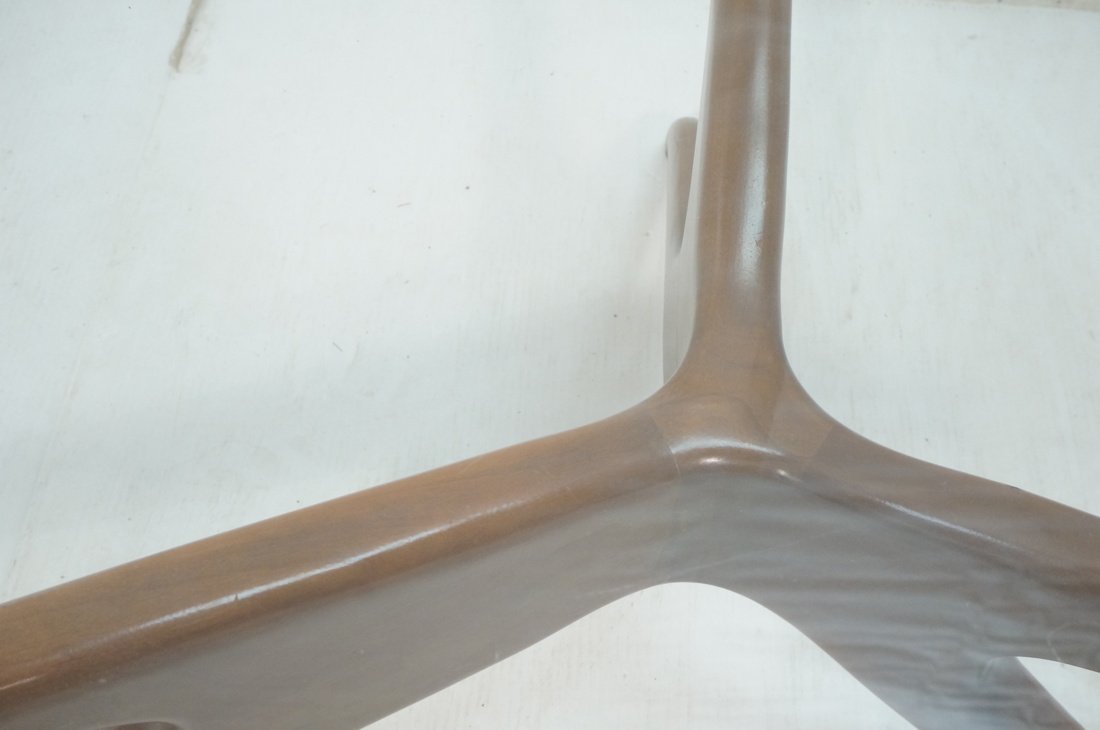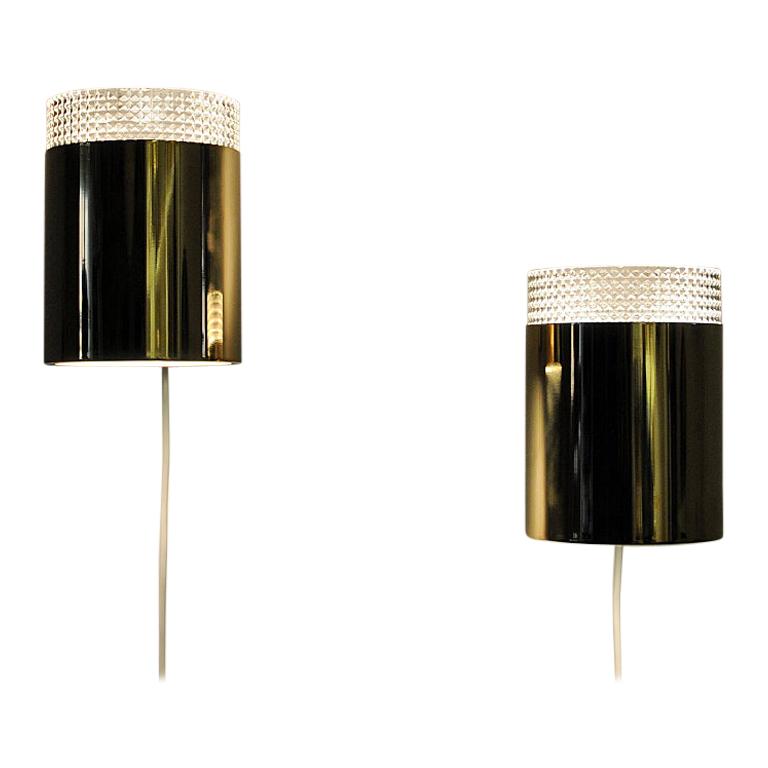I believe there may be vintage knockoffs of this Kagan design floating around out there. I'm not talking about the klunky Pearsall designs that were inspired by Kagan, but rather a piece that was intended to match the form exactly.
However, I am not positive. There was an eBay listing a couple of years ago that looked to have the same base at the OP's photo. As detailed photos were included in the listing, I was able to compare not only the forms, but also the joint locations between the listed frame and a real one. I recall them being slightly different, so I did not bid on it. It's possible that it was a legit frame and the form and joint locations had changed slightly over the years, but it was not worth the cost to me to find out.
... and some words from Mr Kagan himself on the topic. I like the (not-so-subtle) jab he takes at Pearsall.
http://vladimirkagan.typepad.com/vladimir-kagans-blog/2015/09/vintage-vs...
However, notice that the feet framing are different between the OP's photo (curved downward) and the photo in Kagan's post (straight). Either both are legit and the framing slightly changed over the years, or one is not legit.
It's good to have feedback from "the horse's mouth," Mr Kagan himself. How many designers have defended and explained their work in this manner ?
Now, let's critique this table in its various (authentic and not-so-much) forms. In the original design, the "arms" turn up at their ends while the "legs" do not. Why ? What is the aesthetic rationale for that move ? Wouldn't the design be equally valid if the base were turned upside down ? Just asking . . .
The design presented a the top of this page has the benefit of an rationalized design, where arms and legs are treated identically. Pearsall's quasi-knockoff design has four pairs of limbs rather than three, and an even simpler profile to the limbs. Not the same table; it could be analyzed on its own terms, perhaps.
Finally, I'd be most curious to know how the central joint is handled in all three cases. It's a beautifully simple conception that is not necessarily simple to execute soundly.
I'm not sure I understand the point about the "location" of a joint, in cdsilva's post. If all the wood in any of these table bases runs horizontally -- parallel to the floor, that is -- then there would likely be one or more horizontal joints running throughout the piece, because of limits to the sizes of lumber. Since the maker's objective would be to see each element as continuous, as if it came from one very wide plank, then the joints would tend to be almost invisible (as they should, in a side-to-side glue-up -- and not part of the design -- so that they could vary from table to table without causing offense -- as I see it.
The rational way to construct this table, from a woodworker's perspective, would be to have the wood grain follow the axis of each limb, diagonally up and down. Where a limb takes a considerable bend, all bets are off: slender members made of diagonal grain are always going to be more prone to damage from abuse, or even from normal usage.
SDR, I did not save the images from the eBay listing that I previously mentioned, so I cannot talk about the exact joint locations for that table. However, I did find a closeup of a table like in the OP. As you can see, the legs do not all come together in a three-way miter (sorry if my terminology is gibberish). Rather there is a center cog piece, with the joint for each leg a little offset. The flat feet tables always seem to have a three-way miter.
I also checked my Kagan book this evening, and did not see any wood framed examples where the feet are turned down. Factored in with the center joint, I would now lean towards the curved feet tables not being legit, or at least not made by Kagan Dreyfuss.


Thanks for the photos and your comments. I like the table in your last photo, and I see that it definitely is made with parts whose grain direction follows the limbs, up and down. The central hub is one logical way to achieve the radiused sweep at the junction, seen from above, without the trouble of carving those curves from the leg members themselves, a difficult and wasteful move.
The neat appearance of the central node does not, however, explain what's going on inside. This form is like a ballet dancer doing a split while holding a heavy drinks tray over her head -- not an easy feat ! There's considerable stress imposed on that multi-part central joint . . .
Small issue of semantics:
"knockoff" and "replica" are terms applied when a piece is manufactured to mimic another design, usually with cost savings measures included to achieve a lower price point. There are many Eames lounge chair knockoffs out there.
The above Peruche tables, as well as the similar Pearsall ones, are different designs that are "influenced", "in the style of", "in the manner of", or "inspired by" Kagan's designs. While obviously trying to draft off of prestige Kagan designs, these tables are legitimate on their own. Plycraft and Selig made lounge chairs that were clearly inspired by the Eames 670, but were not trying to mimic it.
An item like the OP's table, which could possibly be by Kagan, but does not have solid attribution, is best described as "may be attributed to", or "attributed to" if there is strong supporting evidence. It could also be a knockoff. If the bottom legs are the same shape as the top legs, then manufacturing would have been easier and cheaper, and an indication that it could be a knockoff. At the same time, Kagan could have licensed the design to another manufacturer after Kagan Dreyfuss stopped manufacturing, and the new manufacturer could have made small changes, approved by Kagan, for more efficient production. Kagan even refers to a similar situation in the above link, where Directional became an authorized manufacturer of the Serpentine sofa in the 90's. These licensed pieces would not be as valuable as the originals.
OP's table is, most certainly without a doubt, not Kagan.
I had the pleasure of previously working for Mr. Kagan as his in-house designer. I had access to his complete archives in my time with him and I never saw any documentation the 412 was ever constructed with details indicated in the OP's photo.
If you need any help, please contact us at – info@designaddict.com












